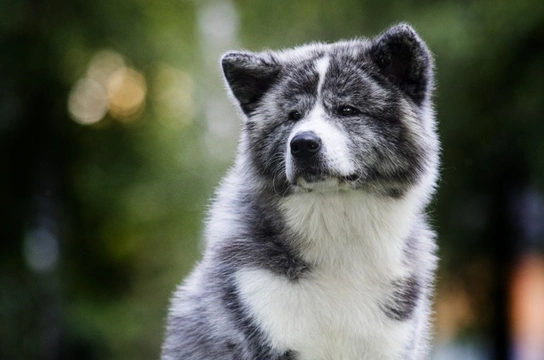
Ten things you need to know about the Akita dog before you buy one
The Akita is a large and handsome-looking dog that has a very definite presence and bags of confidence to match it.
Their thick, plush coats, balanced and healthy conformations and unshakable loyalty to their owners are all part of their appeal, and their skills as watchdogs and natural protectiveness over their families all ensure that Akitas are enduringly popular both in the UK and further afield.
The Akita is actually the 39th most popular dog breed in the UK overall, based on the number of adverts placed for dogs of the breed on Pets4Homes over the last year, and every year, thousands of families consider adding an Akita to their own household.
However, the Akita is a complex breed to know and manage, and they’re not a good fit for everyone, particularly those inexperienced with dogs. If you’re trying to decide if an Akita might be the right dog for you, this article will tell you ten things you need to know about dogs of the breed – before you buy one. Read on to learn more.
There are two variants of the Akita dog breed
Akitas actually come in two different variants, being the Japanese Akita Inu and the American Akita respectively. There are subtle differences in appearance and size between the two variants, with the American variants being larger on average, but otherwise they have more in common than they do apart.
They’re spitz dogs
Akitas are one of several spitz dog breeds, which means that they share a number of distinct physical traits with other dogs of this type, regardless of size. Spitz dogs have proportionately small, pointed ears, curled tails, and thick, plush fur that comprises of several layers, and which is very warm and snuggly to stroke.
…Which means they’re really heavy shedders
Another trait that virtually all spitz dogs share is a tendency to shed a lot of fur, generally all year round. Additionally, in spring and autumn the Akita will go through an even heavier seasonal shed, where they lose virtually all of their old coat within the course of just a couple of weeks.
This is known as blowing the coat, and can be very challenging to keep on top of.
Akitas are expensive dogs to keep
The Akita is a large and well build breed, and they need a lot of food! They also tend to be fairly expensive to keep in general, because large dogs need everything in larger sizes, and more or less everything that dogs need from collars to flea treatments and beyond increase in price as they increase in size. Insuring an Akita can be costly too, and even surgical procedures for large dogs cost more as well!
They have a very high prey drive
Akitas, like most spitz dogs, have a naturally high prey drive and will have a tendency to chase and potentially catch wildlife. Their tendency to pursue prey will extend to other people’s pets like cats and rabbits too, and so the Akita owner must take great care to control and manage their dog appropriately to keep other animals safe.
Akitas are excellent guard dogs
The Akita is a naturally watchful and territorial breed, and they will often actively patrol their home and garden on the lookout for potential threats. They also serve as excellent guard dogs, and make for a very effective deterrent against people who might be up to no good!
However, it is vital to socialise the Akita with both people and other dogs from a young age to ensure that they are not a potential threat to visitors or people who come to the door.
…But they can be prone to dominance
The Akita is a confident, bold dog that is rarely phased by other people or dogs, and these are all traits that ensure they make for good guard dogs. However, they can be prone to dominance if poorly trained or handled, or not taught to respect their owners.
This means that they need to have clear rules and boundaries and understand their place in the household pack structure, viewing their handlers as the pack leaders and deferring to them.
Any signs of bad manners or dominance should quickly be corrected before they become problematic.
Akitas need significant amounts of exercise
The Akita is a large and rangy dog and they need at least two hour or more long walks each day to accommodate for their need for exercise and to keep them fit and happy. They won’t thrive within a sedentary lifestyle, and their walks should be interesting and varied, with both on lead and off lead time provided.
They’re average to low on the canine intelligence scale
Akitas fall towards the lower end of the canine intelligence spectrum, being ranked in 104th place out of a total number of 138 different dog breeds and types. Whilst the Akita can be taught to follow all of the essential commands a dog needs to know, they won’t usually be able to learn a wide vocabulary of commands, and may take longer to pick up new ones than most other breeds.
They may also need more than one repetition of a command they know before they will comply.
They require a confident and experienced owner
The Akita is not a good choice of pet for someone who is inexperienced with dogs in general, nor someone who has no frame of reference for handling and managing a large, confident and potentially dominant dog.
The breed requires an owner who understands them thoroughly through either first-hand experience or plenty of research, and who is confident enough to serve as a good leader and moderator for the dog’s potentially dominant traits.
In the right hands, the Akita is a very rewarding dog breed to choose; but with inappropriate training or poor handling, they can soon become a handful, and even snappy or unpredictable.



